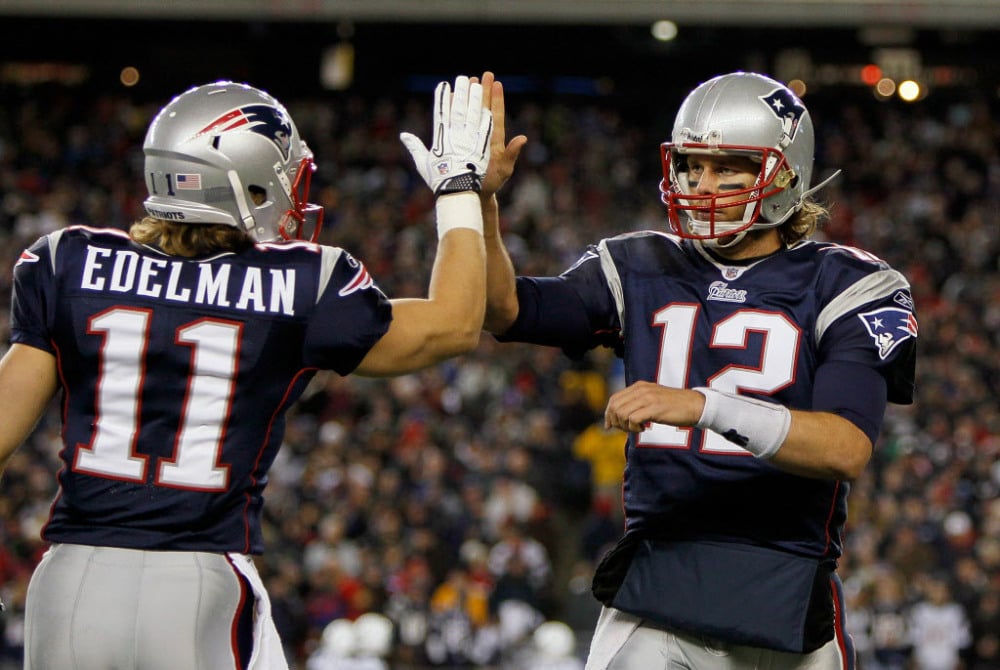In both daily fantasy football and the NFL, much of what was once considered “obvious” is no longer held in such high regard. The idea that it’s okay to draft a defense early in season-long fantasy football or the notion that you should run the ball a lot on first down, for example, are concepts that aren’t really widely accepted anymore.
There are other “truisms” that are false, yet still unbelievably popular, despite the evidence. NFL teams still kick field goals or punt on 4th-and-1, for example, and both NFL teams and fantasy owners alike are bullish on players in contract seasons—despite overwhelming evidence against those positions.
Usually, these concepts emerge because they seem logical. When money is on the line for a player in a contract season, he should play harder, right? When you can get the best defense in fantasy football in the ninth round, you should do it, right? When a running back gets a lot of touches in a season, his body should break down, right?
Another such idea that seems to be intuitive is that quarterbacks and wide receivers should be better together as they develop chemistry. That is, with more experience should come more success. I think this seems so obvious that we don’t even really question it, but maybe we should.
QB-WR Pairs
I charted the year-to-year change of various receiving stats for wide receivers who spent five-plus years with one quarterback since 2000. The idea is that, if chemistry exists and it can help a quarterback/wide receiver pair, we should see progressively better numbers from season to season. Here’s a look at the progression of catches, yards, and touchdowns. Note that each number is relative to the prior season.



That’s pretty much the same graph three times in a row, and it’s a total roller coaster: a boost in Year 2, a decline in Year 3, another spike in Year 4, and a big drop in Year 5.
I’ve opened up these results to commentary and there have been a lot of different responses. One popular explanation is that the wide receiver and quarterback improve in their second year together, then see a dip in the third season because defenses adjust. There’s probably some merit to that, although it’s tough to then explain the increase in production in Year 4.
I think it’s interesting that Years 2, 3, and 4 are all better than Year 1 for the majority of quarterback/wide receiver pairs. Even though there’s a dip in Year 3, overall, it’s still better than Year 1. That suggests that quarterbacks and receivers probably gain the most from Year 1 to Year 2, but after that, there’s not too much of an advantage to be garnered from more time together.
The drop in Year 5 is very perplexing. It’s likely due to one or both players moving out of their career prime, but why such a large drop, and why is it following an improvement in Year 4?
In terms of making predictions, if there’s something here, it’s probably in Year 2. We can’t do anything with Year 1 because we have no baseline to which we can compare it, but we might expect improvement in Year 2 of a quarterback/wide receiver pairing. After that, we’re getting too far out from Year 1, and there are just too many changes around the league from season to season to make the Year 3 and Year 4 numbers that useful.
All other things equal, though, you can probably expect a top quarterback/wide receiver pairing to post these sorts of numbers to start their careers together:
Year 1: N
Year 2: N + 8 catches + 120 yards + 1.75 touchdowns.
The question is if we can have enough confidence in the data to act with the belief that quarterbacks and receivers improve in their second season together. I think the variance in the data suggests that the effect isn’t as strong as it seems, but the fact that Years 2, 3, and 4 are all superior to Year 1 implies that there’s at least some chemistry-esque effect going on.
* Data collected by Ian Hartitz





